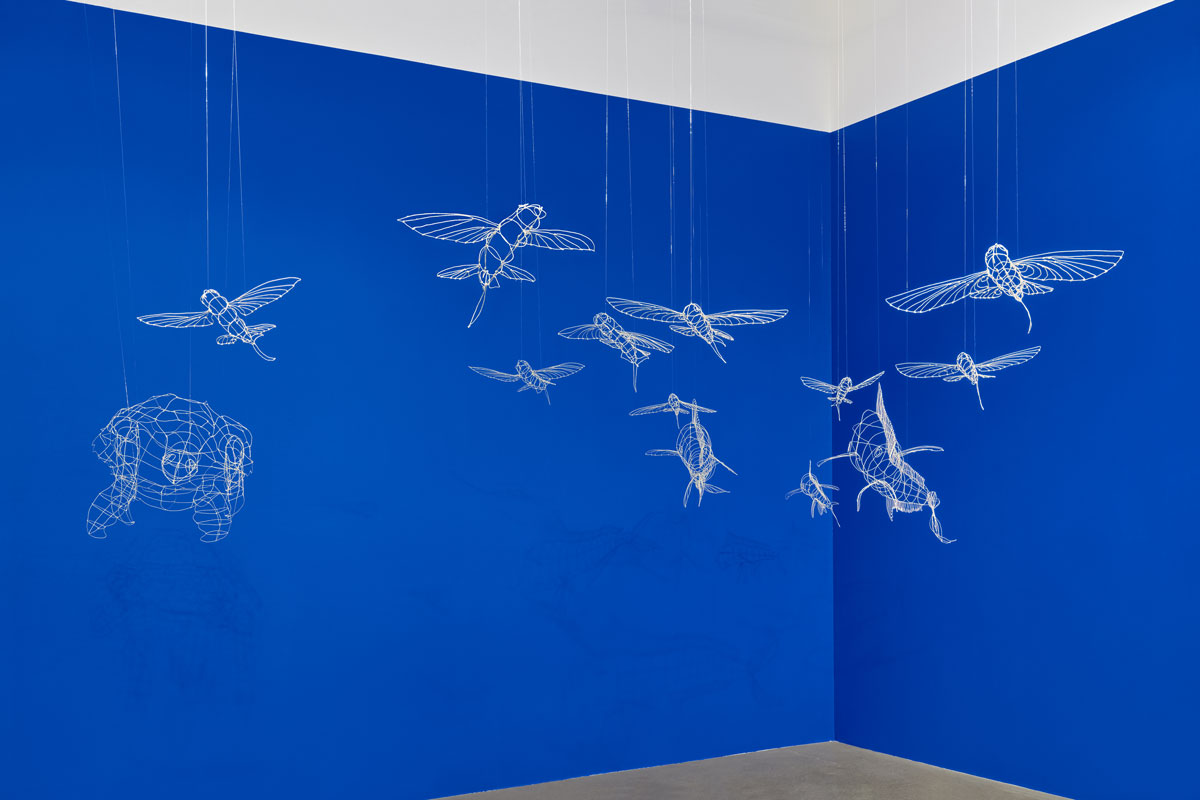How close can we get to understanding someone else’s experience? This is likely not the question Nina Katchadourian asked herself when she began working on her show To Feel Something That Was Not of Our World, now on view at San Francisco’s Catharine Clark Gallery. But it’s the question I’ve been asking myself while tracing her various approaches to the story at the center of this exhibition.
That story is an adventure story, but only because we didn’t live through it ourselves. It starts optimistically in 1971, with the Robertson family selling their farm in Staffordshire, England to buy a 43-foot schooner and a chance to sail the world. But their high-seas life only lasted about one-and-a-half years. In June 1972, a pod of orcas rammed into the ship’s hull in the Pacific Ocean, sinking it in around one minute. The passengers—parents Dougal and Lyn; sons Douglas, Neil and Sandy; and new crew member Robin Williams—escaped to an inflatable raft with minimal tools and supplies and one small dinghy.
They survived adrift for 38 days.

Katchadourian first came across their story when she was seven, when her mother read her the 1973 book Survive the Savage Sea, Dougal Robertson’s account of the family’s experience drawn from his detailed logbook. At the time, the tale was pure adventure to Katchadourian, like the fictional escapades of another (Swiss) family.
Almost 50 years later, the Robertsons’ story remained a touchstone. Katchadourian reread the book nearly every year; in 2011 she visited the National Maritime Museum of Cornwall to see their dinghy. But it wasn’t until spring 2020 that she wrote a letter to Douglas, now 66, tentatively reaching out to see if he might talk to her for what would become To Feel Something. Katchadourian was planning to work on the project for the duration of the family’s time at sea, June 15 to July 22; Douglas generously suggested they speak every one of those days.



